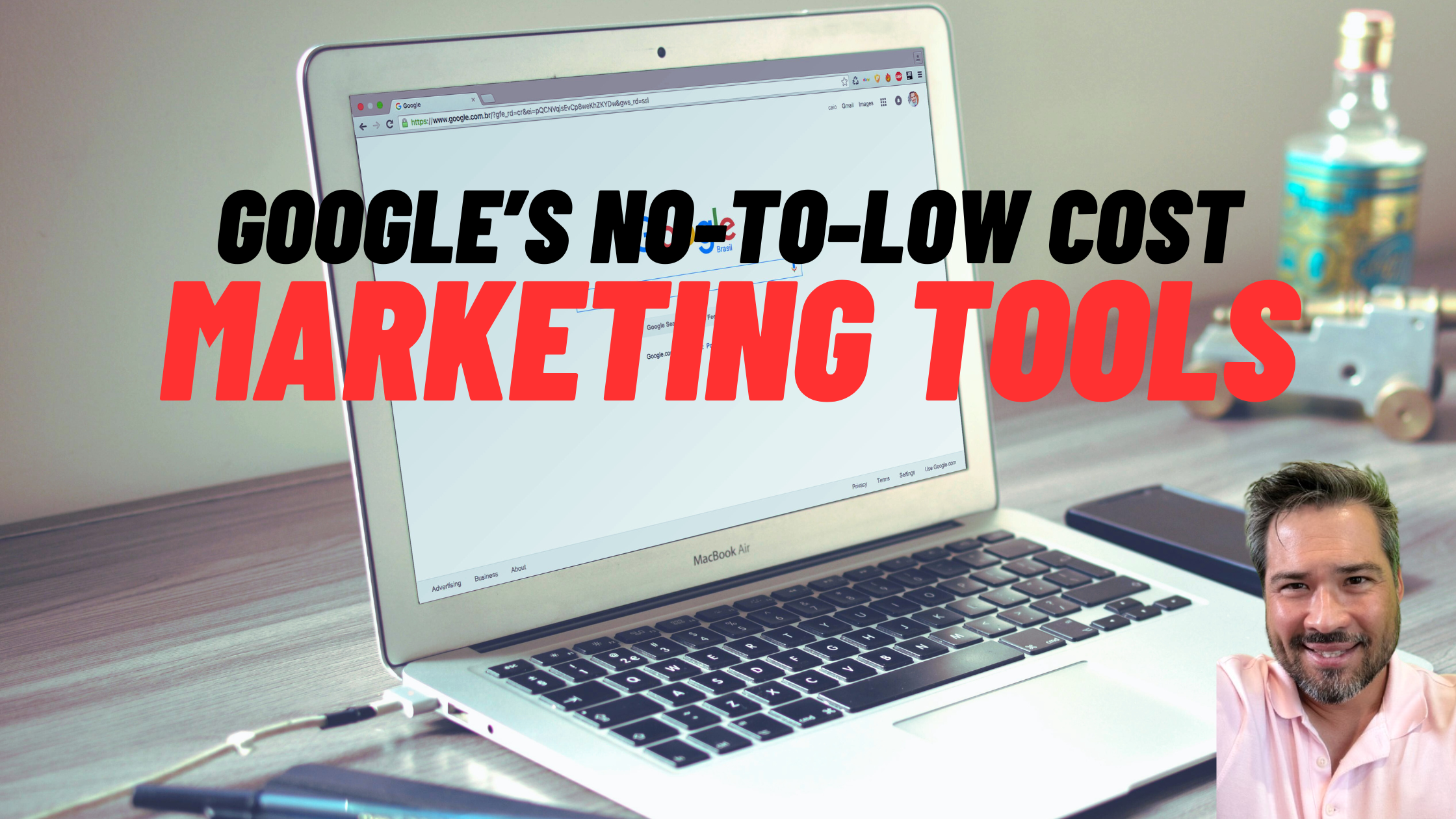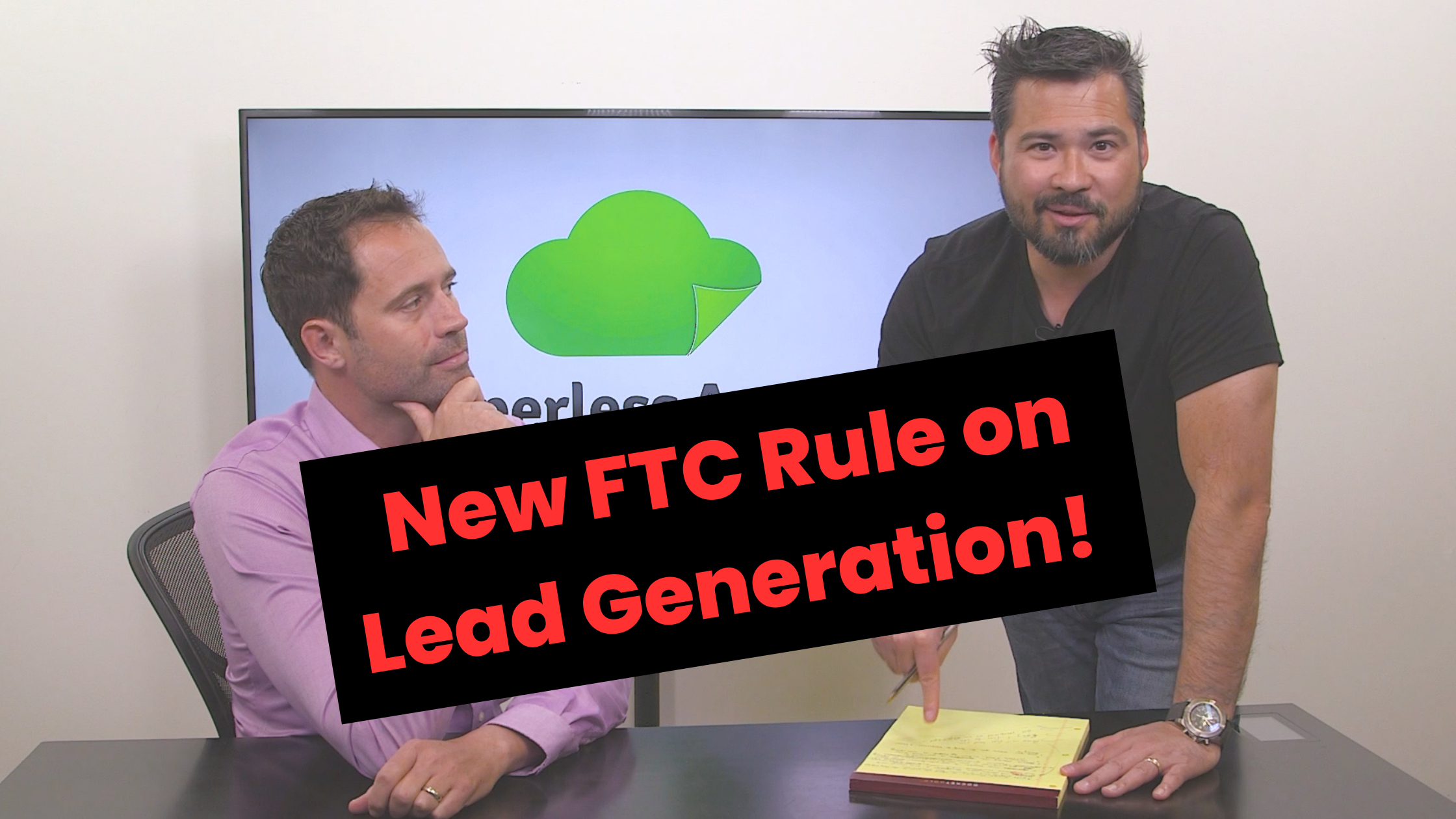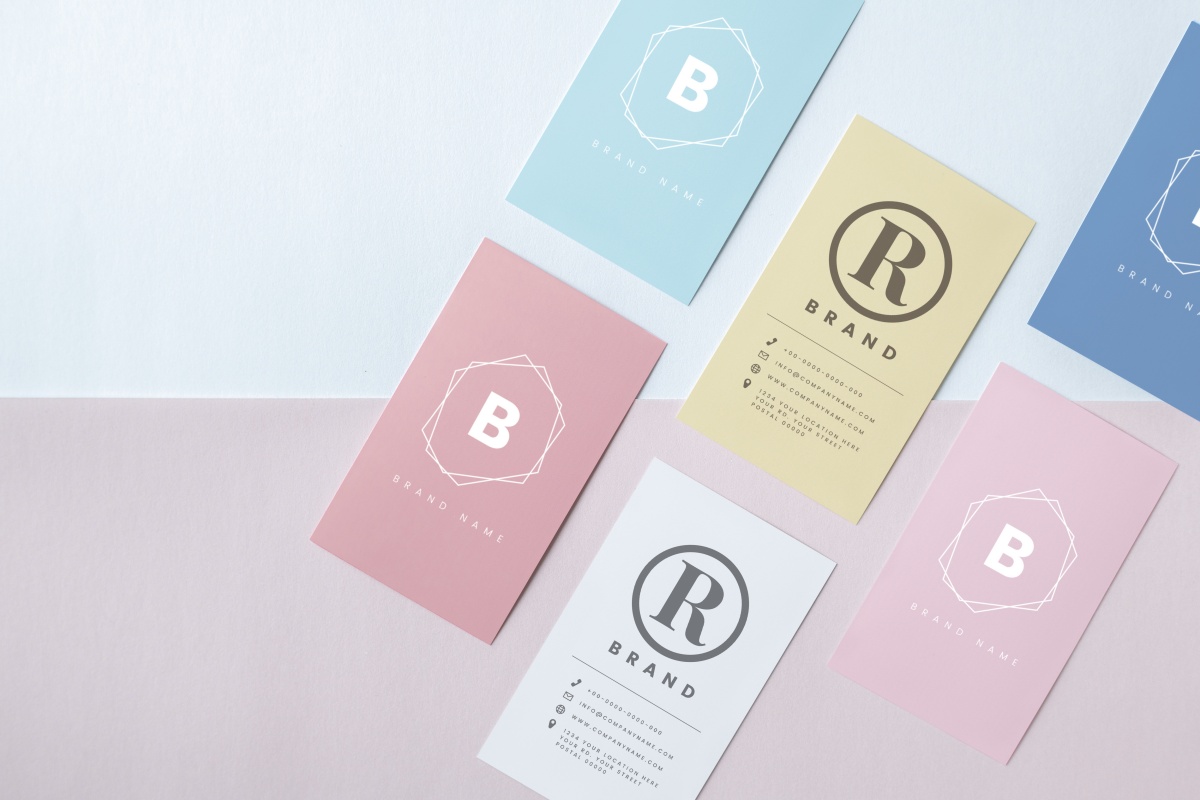
Your branding is a key piece of your overall marketing. As marketing guru Seth Godin says, “A brand is the set of expectations, memories, stories and relationships that, taken together, account for a consumer’s decision to choose one product or service over another.”
In other words, your branding defines what your business is all about and what you offer the world. It also helps customers feel connected to your business. According to researchers, “70 percent of emotionally engaged consumers spend up to two times or more on brands they are loyal to, compared to less than half (49 percent) of consumers with low emotional engagement.”
Use this branding inspiration and must-have strategies to develop a brand that’s memorable and profitable.
Get Organized: Download your Your 12 Month Real Estate Marketing Calendar For More Listings & Leads!
Branding 101
Before you can define your company’s branding, you must understand the key components of a brand that are weaved into your messaging, marketing, and even client communications. Here’s a breakdown of the most important elements of your brand.
Mission and Vision
A business is defined by its mission and vision first and foremost. A lot of people think of logos and slogans when they think of branding. Without a strong mission and vision, however, it will be difficult to create a concrete and consistent brand.
Here’s how to define your mission and vision:
- Mission = what you’ll do today
- Vision = where you want those actions to lead you tomorrow
Clearly defining and communicating your mission and vision can create an emotional connection with customers. As Starbucks CEO, Howard Shultz, said, “If people believe they share values with a company, they will stay loyal to the brand.”
Branding Inspiration: Mission and Vision in Action
Once you have your mission and vision, it’s important that you communicate that within your marketing and messaging. The Brown Harris Stevens Real Estate Group has done a masterful job clearly communicating its ideals to customers on its website. First and foremost, they state their mission statement clearly on their about page.
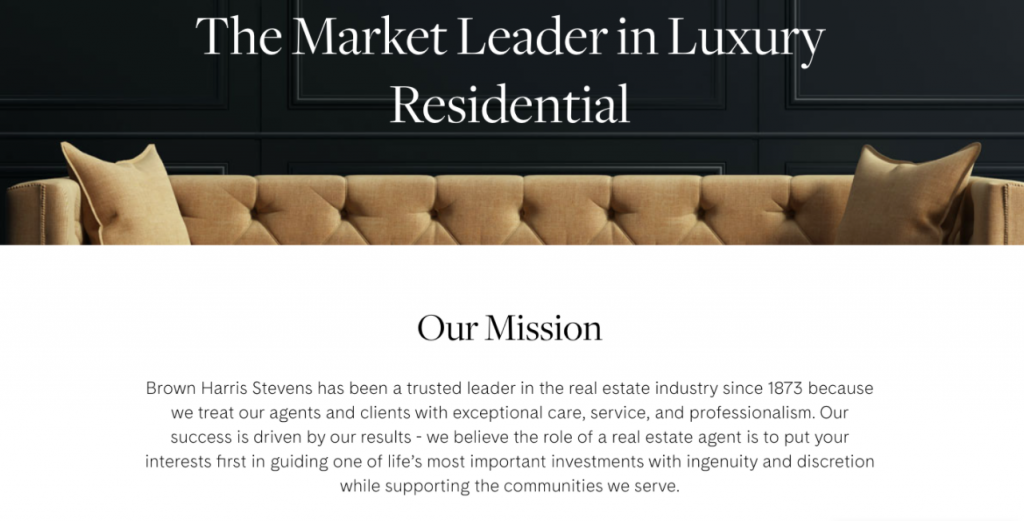
You might notice that the header on this page, “The Market Leader in Luxury Residential,” is also their vision statement. In their mission, they expand on that. They have experience (“since 1873”), value people (“treat our agents and clients with exceptional care”), and will take care of you (“put your interests first”). As a client, this mission statement helps create trust and affinity for their brand.
They’ve also taken it one step further and added their values to their about page as well.
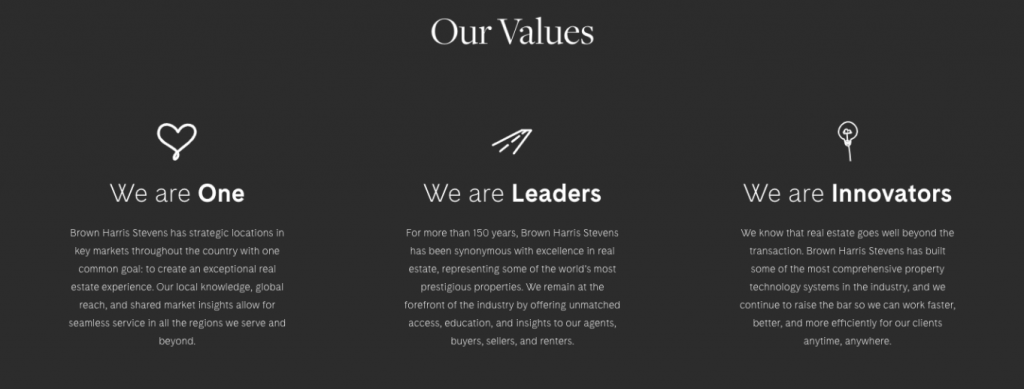
This is a great example of how to communicate your brand values clearly, where potential clients are likely to see them. Don’t fall into the trap of using your about page to tell your personal story. While sharing your story can be valuable, it’s important to center the narrative on the customer, not just you.
Keep Reading: 5 Pillars of Real Estate Branding that Drive More Leads
Visuals: Logos, Colors, and Design
Once you’ve successfully defined your mission and vision, you can shift your focus to the visual side of your brand. This includes logos, colors, business cards, flyers, advertisements, and other customer-facing materials.
An important step in this process is to establish a consistent color pallet for your brand. Think of all the brands you recognize by color alone: Starbucks (green), Target (red), or Facebook (blue). You don’t need to be a global brand to create recognition through color. Repetition, like when potential clients see your branded social posts again and again, makes your brand recognizable.
To choose your brand color, consider what each color means and signifies. Canva breaks this down. Once you know what the colors mean, you can choose the one that best represents your mission and vision.
In addition to the color palette, you need to choose your primary and secondary fonts. Use this guide from DesignRush to understand the various fonts and choose the best ones for your brand.
With the font and color chosen, you can focus on your logo and then update your marketing materials. Consistency is key. This means using the same color scheme, style, and fonts across all your print and digital assets, website, and social media.
Branding Inspiration: Visual Branding in Action
One of the most famous real estate brands in the world recently underwent a major brand redesign. Century 21 traded its black and yellow branding in for a modern neutral refresh. Here’s their original design:
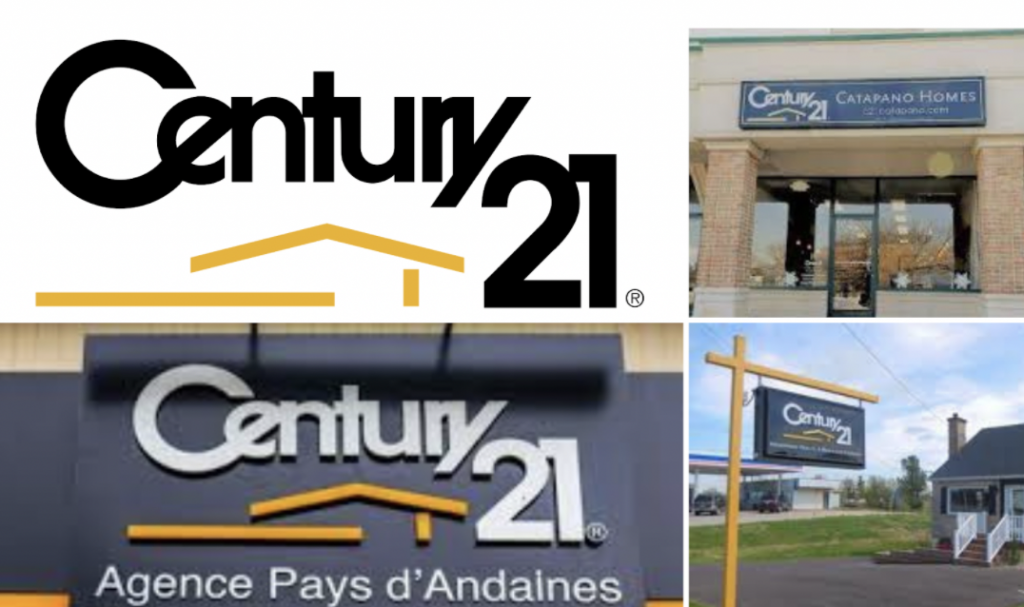
You likely immediately recognize that black and yellow coloring and their signature font. However, they recently updated their logo to modernize their brand. You can see their new logo and color scheme here:
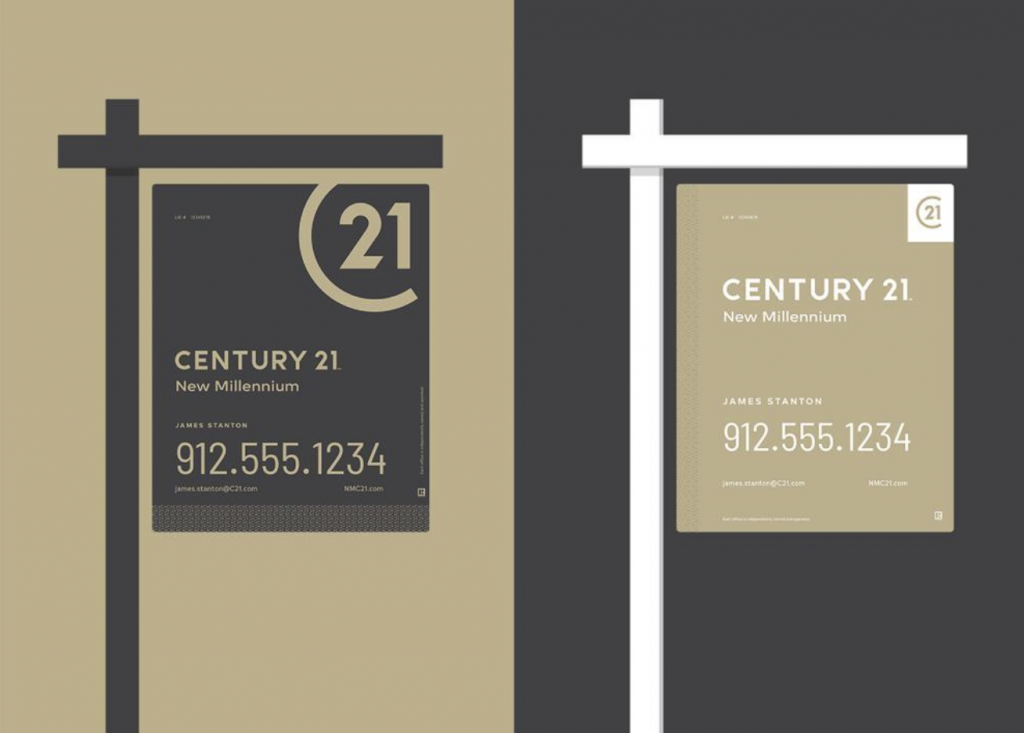
While this is less recognizable right now, you can see that they carefully curated a consistent look and feel across their brand materials. This makes it easy for consumers to begin recognizing their new brand as well.
Keep Reading: 5 Reasons to Invest in Professional Realtor Headshots
Tone and Voice
The final core piece of your branding is your tone and voice. Defining this aspect of your brand is important because it will guide all of your written communications. These two pieces break down as such:
- Tone: This might change depending on the situation. You may be more lighthearted in a fun social media post while being more series in a case study.
- Voice: This will remain consistent. This is when you go back to your mission and vision again and ask yourself: what voice best represents what we stand for, who we are, and what we provide clients. This includes the words you use to describe your brand.
You might immediately think of brands that have a clear voice and tone. Wendys is known for its casual voice and sarcastic tone. Disney uses a fun light-hearted tone and family-friendly voice. When you establish your voice and tone like this, you’ll incorporate it everywhere you talk to customers. Your website, emails, and printed materials should align and remain consistent.
Branding Inspiration: Voice and Tone in Action
This example from the Jills Zeder Group shows how they’ve incorporated their voice and tone into their website. Their brand is defined by power and family and you likely get that sense when you read their website copy.
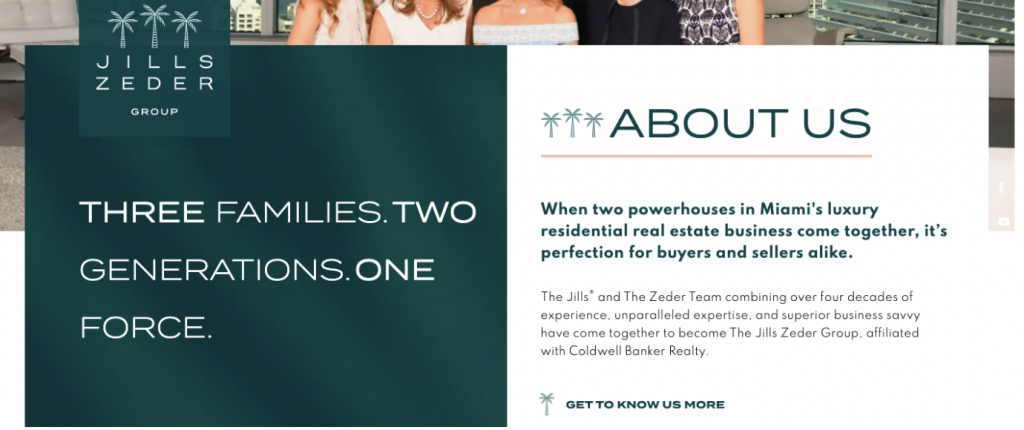
On the left of their mini About Us section, they highlight their family-oriented brand, and then emphasize that together they are a powerful “force.” On the right, they use words like “powerhouses,” “together,” and “four decades of experience” which are emblematic of their style of voice.
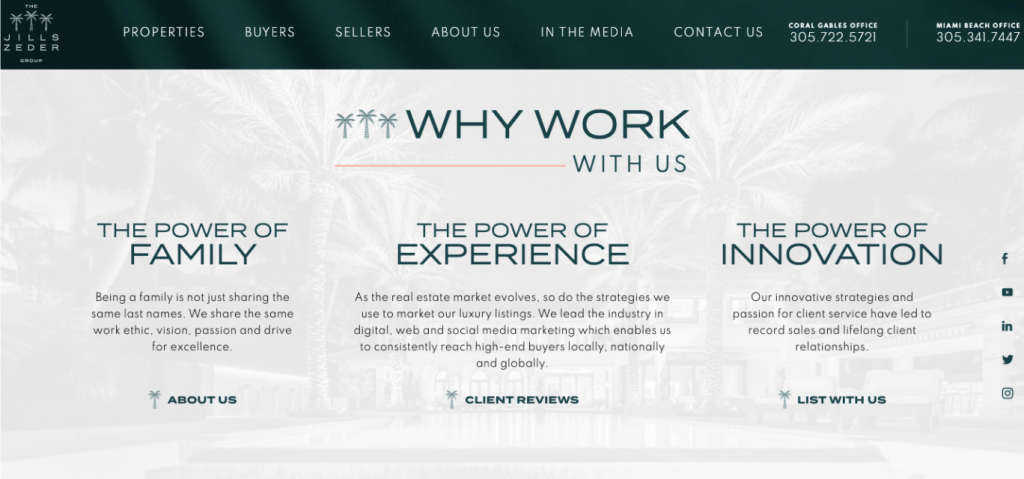
In their Why Work With Us section, they highlight the power of their brand clearly by using headers that all begin with “the power of.” Notice the consistency in their language.
On their about page, they’ve continued to use the same voice and tone as their homepage. They use words like “combined forces,” “one of the most influential and successful real estate families,” and “powerhouse team.” By using these types of words consistently, they are creating a clear brand voice that communicates who they are and what they value.
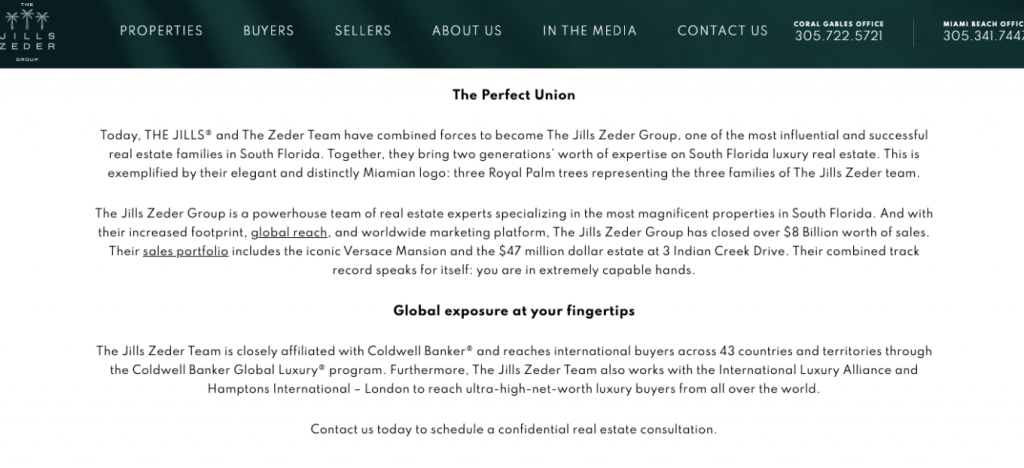
How to Define Your Branding
Creating your brand takes more than creativity. It needs to be an intentional process, based on who you are, what you want to achieve, and what you bring to the world. Here are a few key steps to keep in mind.
Set Goals and Objectives
Before you can start creating your brand or overhauling your existing one, you need to have a clear goal. Do you want to establish your brand as a new real estate agency? Do you want to rebrand to better appeal to a younger audience? Use this to guide the decisions you make.
Set Realistic Timelines
When you’re ready to invest in your brand, don’t rush the process. Getting clear on who you want to speak to, what you want to say, and then identifying how you’ll get it all done is critical. For example, you may want to find a freelancer designer to create your logo and that can take time.
Be Original
Your branding is most effective when you focus on yourself. If you don’t make your brand original, it won’t be memorable. Lean into your own originality and use your brand as a tool to stand out—not blend in.
Work With Trusted Professionals
Unless you have a dedicated brand team in-house, you’ll likely need to work with external brand professionals to accomplish your goals. Carefully vet the team or individuals you choose to work with. Ask for referrals from other agents and work with people who know the real estate industry. You need someone who you can trust to guide you.
Write Everything Down
Document your mission and vision, visual standards, and tone and voice clearly in a brand guide. This will help everyone stay aligned on the core branding principles and will help future employees learn the brand quickly.
Keep Reading: How to Get 10 Listings in 30 Days Using Our 5-Step System
From Branding Inspiration to Your Own Brand
While it can take time to define your real estate brand, starting early and getting clear on these details will help you create brand recognition sooner. Your branding can help you become known and trusted in your industry and stay top-of-mind for clients when they think of real estate—and that’s worth the time.

